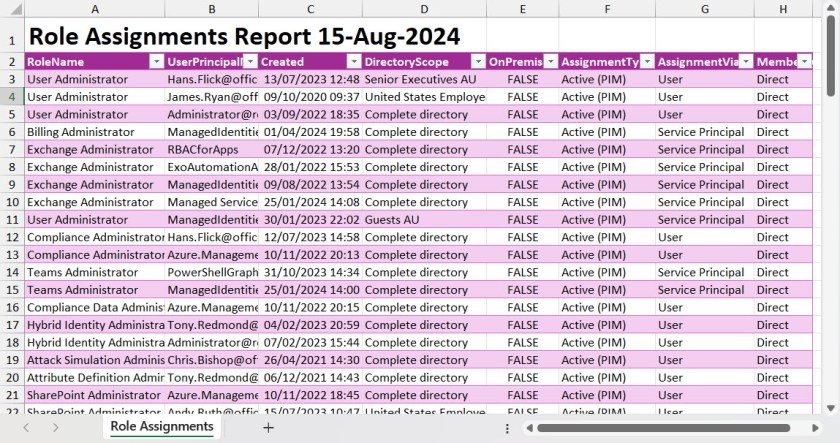Table of Contents
Look Out for Synchronized On-Premises Accounts Holding Administrative Role Assignments
An August 2 post by SpecterOps highlights the dangers for hybrid Microsoft 365 organizations of synchronizing on-premises accounts to Entra ID that hold administrative roles. This is a long-running story. Following the SolarWinds debacle, Microsoft explicitly recommended in December 2020 that “synchronized objects hold no privileges beyond a user in Microsoft 365, either directly or via inclusion in trusted roles or groups.”
Even with all the warnings, it seems that some organizations never received the memo or continue to allow synchronized accounts to hold Entra administrative roles. That’s a great pity, just like the failure to enable strong multifactor authentication to protect user accounts.
This brings me to the question of how to scan for accounts synchronized from on-premises that hold Entra ID administrative roles. As always, it’s great to build off community ideas. In this case, Nathan McNulty tweeted some Microsoft Graph PowerShell SDK code to find accounts holding administrative roles. Nathan doesn’t seem to have published anything in his GitHub repository, so my version is available from the Office 365 for IT Pros repository.
Previous Script to Report Administrative Roles
I’ve been down the road of reporting privileged role assignments before when I wrote a script in 2023 to look for assignments for the Global administrator and Exchange administrator roles. The information about role assignments is then used to disable PowerShell for all accounts except the holders of the two roles. The 2023 script used cmdlets from the now-retired AzureADPreview module, so I updated the code to use cmdlets from the Microsoft Graph PowerShell SDK instead.
Processing Steps to Find and Report Administrative Roles
The script to report administrative roles handles both Privileged Identity Management (PIM) and non-PIM assignments and does the following:
- Administrative role assignments can be scoped to the entire directory or specific administrative units. The assignments stores GUIDs for administrative units. To make sure that the report can include the display name for administrative units, the script loads details of administrative units into a hash table. As the script processes each assignment, it looks the administrative unit to find its display name.
- Runs the Get-MgBetaRoleManagementDirectoryRoleAssignmentSchedule cmdlet to retrieve the set of PIM active assignments. These are role assignments that are currently in use.
- Parses each assignment to find it if is to a user, group, or service principal. If a group, expand the set of group members. Add what’s found to a PowerShell list.
- Runs the Get-MgBetaRoleManagementDirectoryRoleEligibilitySchedule cmdlet to find the set of eligible assignments. Parse what’s found and add to the PowerShell list.
- If the script can’t find any PIM assignments, the likelihood is that the tenant doesn’t use PIM, so the script finds the set of members assigned to each directory role and report that.
- Outputs details of the assignments via the Out-GridView cmdlet plus either a CSV file or Excel worksheet (Figure 1), depending on whether the ImportExcel module is available.
- Finally, the script lists any on-premises users found with administrative roles.

Feel Free to Improve the Code
No doubt some improvements can be made to the code to make administrative role assignments easier to understand. The point is that the script is relatively simple PowerShell that should be easy to work with and update. It is best to make the changes direct in GitHub so that everyone benefits from your inspiration.
Learn more about how Microsoft 365 really works on an ongoing basis by subscribing to the Office 365 for IT Pros eBook. Our monthly updates keep subscribers informed about what’s important across the Microsoft 365 ecosystem.